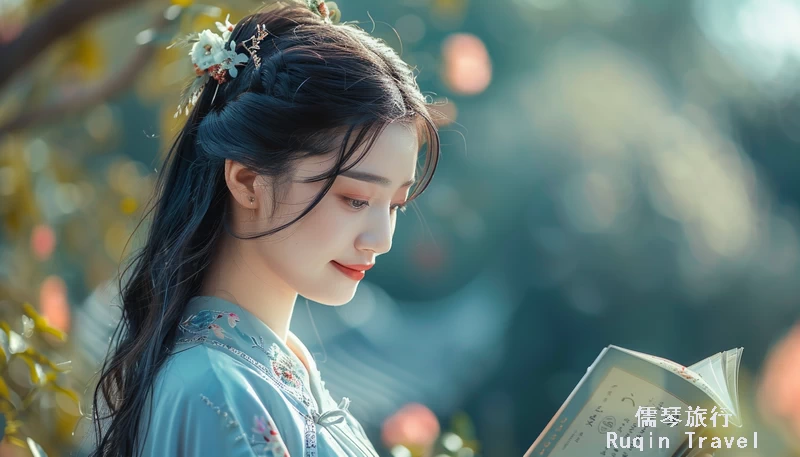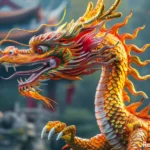Ancient Chinese poetry offers a window into the soul of one of the world’s oldest civilizations. For foreign visitors traveling to China, understanding these poetic traditions can enrich their cultural experience.
This “Discovering Ancient Chinese Poetry” article delves into the essence of ancient Chinese poetry, focusing on its history, famous poets, and notable styles. By exploring this literary heritage, you will gain a deeper appreciation for China’s rich cultural tapestry.
The Origins of Ancient Chinese Poetry
Ancient Chinese poetry dates back thousands of years, rooted in early oral traditions. The earliest poems were simple and direct, often reflecting daily life and nature. These early forms laid the groundwork for more complex poetic structures.
The first significant collection of Chinese poetry is the “Classic of Poetry” (Shijing), compiled around 600 BCE. This anthology features 305 poems that range from folk songs to courtly verses. The “Classic of Poetry” set the stage for future poetic development and remains a cornerstone of Chinese literature.
Tang Dynasty: The Golden Age of Chinese Poetry
The Tang Dynasty (618-907 CE) is often hailed as the golden age of Chinese poetry. During this era, poetry became a central part of cultural and political life. Poets enjoyed high status, and their works were widely circulated and celebrated.
Li Bai and Du Fu are two of the most famous poets from this period. Li Bai, known for his romantic and free-spirited style, created vivid imagery and emotional depth in his poems. His works often explore themes of nature, friendship, and the fleeting nature of life. Some of his famous poems include “Quiet Night Thought” and “Drinking Alone by Moonlight.”
In contrast, Du Fu’s poetry is more somber and reflective. His works often address social issues and personal struggles. Du Fu’s poetry provides a poignant commentary on the hardships of his time, making his works deeply moving and historically significant. Notable poems by Du Fu include “Spring View” and “A Song of My Cares While Climbing the Tower at Yueyang.”
The Song Dynasty: Innovation and Refinement
Following the Tang Dynasty, the Song Dynasty (960-1279 CE) saw further evolution in Chinese poetry. This period is known for its refinement and innovation in poetic forms. Ci poetry, a lyrical style set to music, became popular during this era. These poems often express personal emotions and romantic themes.
Su Shi (Su Dongpo) is one of the most celebrated poets of the Song Dynasty. His versatility and mastery of various poetic forms made him a prominent figure in Chinese literature. Su Shi’s poems reflect his philosophical outlook and love for nature. “Ode to the Red Cliff” is one of his most famous works, showcasing his talent and depth.
Key Themes in Ancient Chinese Poetry
Ancient Chinese poetry encompasses a wide range of themes, reflecting the diverse experiences and values of Chinese society. Common themes include nature, love, friendship, and the impermanence of life. Poets often used nature as a metaphor for human emotions and philosophical reflections.
For example, the moon frequently appears in Chinese poetry, symbolizing longing and separation. Similarly, the changing seasons often represent the passage of time and the cycles of life. These themes resonate deeply with readers, offering timeless insights into the human condition.
Chinese Poetic Forms and Styles
Ancient Chinese poetry features various forms and styles, each with its own rules and structures. The most notable forms include the shi, ci, and qu.
Shi poetry is the oldest form and includes both ancient and modern styles. Ancient shi poetry, such as that found in the “Classic of Poetry,” is characterized by simple language and repetitive structures. Modern shi, developed during the Tang Dynasty, is more elaborate and follows strict tonal patterns and parallelism.
Ci poetry emerged during the Song Dynasty and is defined by its musical quality. These poems were written to match specific tunes, with varying line lengths and rhythms. This form allowed poets to express more personal and emotional themes.
Qu poetry, developed in the Yuan Dynasty (1271-1368 CE), is a more flexible and expressive form. It incorporates colloquial language and was often used in drama and folk songs. Qu poetry’s accessibility and emotional depth made it popular among a broad audience.
Understanding Ancient Chinese Poetry
For foreign visitors, understanding ancient Chinese poetry can seem challenging. However, with some background knowledge, it becomes an enriching experience. To start, focus on the imagery and emotions conveyed in the poems. Pay attention to recurring symbols, such as the moon, mountains, and rivers, as these often carry deeper meanings.
Additionally, learning about the historical and cultural context can provide valuable insights. Knowing the life stories of poets like Li Bai and Du Fu, and the events that shaped their works, adds layers of meaning to their poetry. Many English translations are available, which can help bridge the language gap and offer a glimpse into the beauty of Chinese verse.
Famous Ancient Chinese Poems and Their Significance
Several ancient Chinese poems have gained worldwide recognition for their beauty and depth. Here are a few notable examples:
- “Quiet Night Thought” by Li Bai: This poem captures the poet’s homesickness as he gazes at the moon. Its simple language and universal theme make it one of Li Bai’s most beloved works.
- “Spring View” by Du Fu: Written during a period of political turmoil, this poem reflects Du Fu’s sorrow for his country. Its vivid imagery and emotional depth highlight Du Fu’s mastery of the craft.
- “Ode to the Red Cliff” by Su Shi: This poem blends historical reflection with personal emotion. It is renowned for its philosophical depth and lyrical beauty.
These poems offer a glimpse into the rich world of ancient Chinese poetry, showcasing the poets’ skill and the timeless themes they explore.
Ancient Chinese poetry is a treasure trove of cultural and literary heritage. For foreign visitors, exploring these classic poems can provide a deeper understanding of China’s history and values. From the romantic verses of Li Bai to the poignant reflections of Du Fu, these works continue to inspire and captivate readers around the world.
By delving into the world of ancient Chinese poetry, you embark on a journey through time, experiencing the beauty and wisdom of a civilization that has shaped the course of human history. Check China Cultural Insights for more information.



